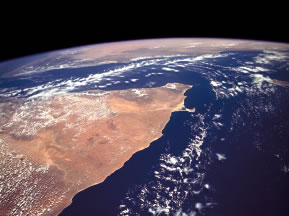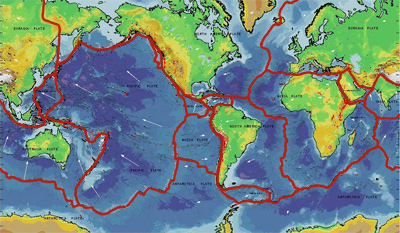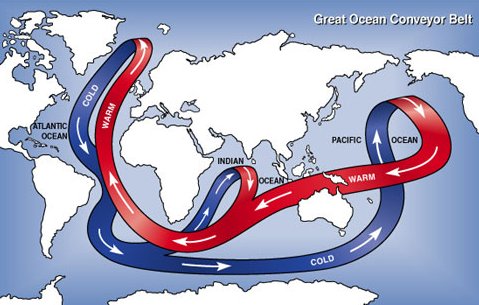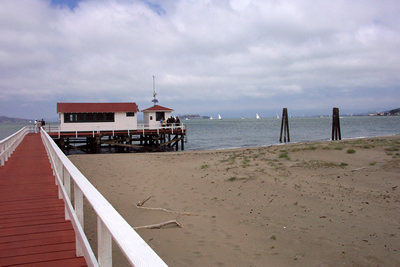
Image courtesy of NASA
Ocean Literacy - Essential Principle 1
The Earth has one big ocean with many features.
Fundamental Concept 1a.
The ocean is the dominant physical feature on our planet Earth—covering approximately 70% of the planet’s surface. There is one ocean with many ocean basins, such as the North Pacific, South Pacific, North Atlantic, South Atlantic, Indian and Arctic.
Fundamental Concept 1b.
An ocean basin’s size, shape and features (islands, trenches, mid-ocean ridges, rift valleys) vary due to the movement of Earth’s lithospheric plates. Earth’s highest peaks, deepest valleys and flattest vast plains are all in the ocean.
Fundamental Concept 1c.
Throughout the ocean there is one interconnected circulation system powered by wind, tides, the force of the Earth’s rotation (Coriolis effect), the Sun, and water density differences. The shape of ocean basins and adjacent land masses influence the path of circulation.
Fundamental Concept 1d.
Sea level is the average height of the ocean relative to the land, taking into account the differences caused by tides. Sea level changes as plate tectonics cause the volume of ocean basins and the height of the land to change. It changes as ice caps on land melt or grow. It also changes as sea water expands and contracts when ocean water warms and cools.
Fundamental Concept 1e.
Most of Earth’s water (97%) is in the ocean. Seawater has unique properties: it is saline, its freezing point is slightly lower than fresh water, its density is slightly higher, its electrical conductivity is much higher, and it is slightly basic. The salt in seawater comes from eroding land, volcanic emissions, reactions at the seafloor, and atmospheric deposition.
Fundamental Concept 1f.
The ocean is an integral part of the water cycle and is connected to all of the earth’s water reservoirs via evaporation and precipitation processes.
Fundamental Concept 1g.
The ocean is connected to major lakes, watersheds and waterways because all major watersheds on Earth drain to the ocean. Rivers and streams transport nutrients, salts, sediments and pollutants from watersheds to estuaries and to the ocean.
Fundamental Concept 1h.
Although the ocean is large, it is finite and resources are limited.














